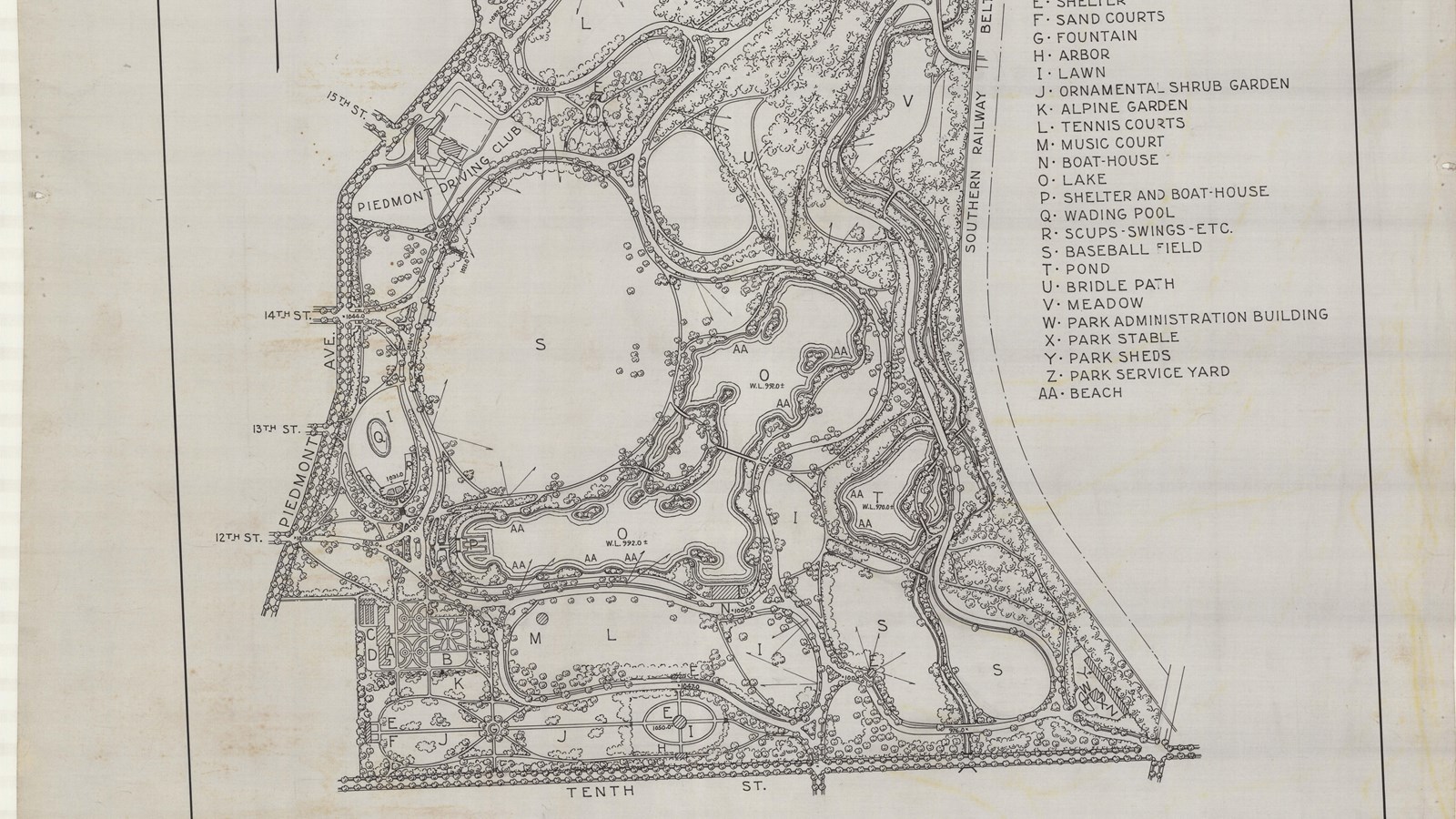Last updated: June 11, 2024
Place
Piedmont Park

Olmsted Archives
While Piedmont Park was designed by the Olmsted Brothers, Frederick Law Olmsted Sr. was the first in the family to walk across the land the park would eventually become. During the late 1880s and early 1890s, this land was the venue for numerous fairs and expositions.
In 1895, the site was chosen for the Cotton States and International Exposition, at which point Olmsted Sr. was consulted on the layout of the exposition, influencing elements of the plan. After the extravagant exposition, Atlanta was unsure of what to do with the 187 acres of forest.
The City of Atlanta was hesitant about buying the land, believing the park was too far away from the city. However, in 1904 Atlanta purchased the land that would become Piedmont Park, and even extended its city limits to encompass the park acreage.
In 1909, Atlanta elected to transform the decaying fairgrounds into a park. They wanted their own Central Park, though its designer, the Sr. Olmsted, had passed years before. So, Atlanta got the next best thing; they hired the Olmsted Brothers to develop its master plan.
The Olmsted Brothers plan would utilize already present stone stairways as access paths between the different levels of the park’s grounds. Despite the City agreeing to pay $1,800 for the plan, Olmsted Brothers were concerned Atlanta may not have enough money to make necessary improvements as they came up.
As the Olmsted Brothers worked on Piedmont Park from 1909 to 1912, the design they implemented reflected the picturesque style and design principles they had learned from their father. The Piedmont Park the Olmsted Brothers designed featured broad grassy lawns and playing field, shaded woodland with over 15 miles of walks, drives, and bridal paths.
Due to budget constraints, some, but not all, of the Olmsted Brothers’ plan was realized. Nevertheless, the Olmsted Brothers plan greatly influenced the development of Piedmont Park. Much of the landscape and vistas remain today, providing green space for the urbanized neighborhoods surrounding the park.
Though the Olmsted Brothers plan wasn’t fully realized, the current master plan for Piedmont Park, adopted in 1995, honors the brothers’ original vision for the park.
Source: "Piedmont Park," The Cultural Landscape Foundation
For more information and primary resources, please visit:
Olmsted Research Guide Online
Olmsted Archives on Flickr
